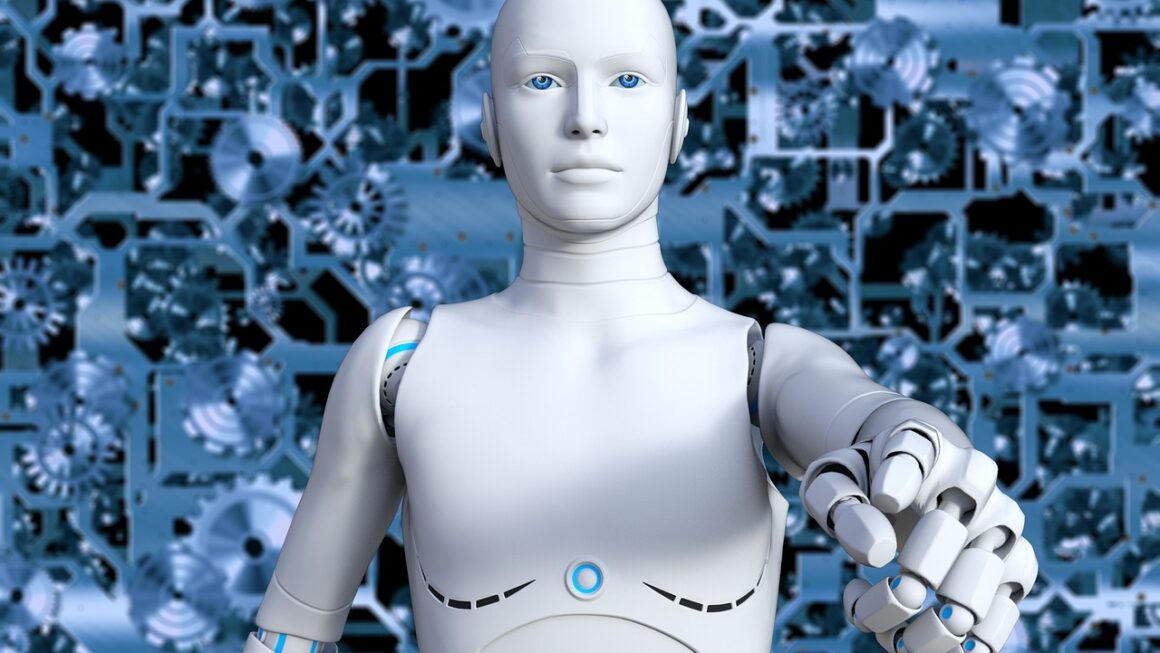The rise of Artificial Intelligence (AI) is no longer a futuristic fantasy; it’s a present-day reality reshaping businesses and industries at an unprecedented pace. This AI transformation is more than just adopting new technologies; it’s about fundamentally rethinking how organizations operate, create value, and interact with their customers. Navigating this revolution requires a strategic understanding of AI’s capabilities and a commitment to integrating it thoughtfully across all aspects of your business.
Understanding AI Transformation
What is AI Transformation?
AI transformation is the strategic integration of Artificial Intelligence technologies and principles into all aspects of a business, fundamentally changing how it operates, delivers value, and interacts with its stakeholders. It’s not simply implementing a few AI tools but rather a holistic shift that impacts processes, culture, and the entire business model. It’s about creating an “AI-first” mindset.
Why is AI Transformation Important?
In today’s rapidly evolving landscape, AI transformation is no longer a competitive advantage but a necessity for survival. Organizations that embrace AI are better positioned to:
- Increase Efficiency: Automate repetitive tasks, streamline workflows, and optimize resource allocation.
- Improve Decision-Making: Leverage data insights to make informed decisions and predict future trends.
- Enhance Customer Experience: Personalize interactions, provide faster support, and create seamless experiences.
- Drive Innovation: Develop new products and services, explore untapped markets, and disrupt existing industries.
- Reduce Costs: Optimize operations, minimize errors, and lower operational expenses.
- Boost Revenue: Increase sales, improve customer retention, and generate new revenue streams.
A recent McKinsey report found that companies that actively pursue AI adoption are 23% more likely to achieve above-average profitability.
The Scope of AI Transformation
AI transformation encompasses various areas, including:
- Automation: Automating repetitive tasks and processes using robotic process automation (RPA) and AI-powered tools.
- Data Analysis: Analyzing large datasets to identify patterns, trends, and insights using machine learning and data mining techniques.
- Personalization: Tailoring products, services, and experiences to individual customer needs and preferences using AI-driven personalization engines.
- Customer Service: Providing AI-powered chatbots and virtual assistants to handle customer inquiries and resolve issues quickly and efficiently.
- Product Development: Using AI to accelerate product development, improve product quality, and identify new product opportunities.
Key Technologies Driving AI Transformation
Machine Learning (ML)
Machine learning is the cornerstone of AI transformation. It enables systems to learn from data without explicit programming, improving their performance over time.
- Example: A retail company uses machine learning to analyze past sales data and predict future demand for specific products. This allows them to optimize inventory levels and minimize stockouts.
Natural Language Processing (NLP)
NLP empowers machines to understand, interpret, and generate human language.
- Example: A customer service department uses NLP-powered chatbots to answer customer inquiries, resolve issues, and provide personalized support.
Computer Vision
Computer vision enables machines to “see” and interpret images and videos.
- Example: A manufacturing company uses computer vision to inspect products for defects, ensuring quality control and reducing waste.
Robotic Process Automation (RPA)
RPA automates repetitive, rule-based tasks by mimicking human actions.
- Example: An accounting department uses RPA to automate invoice processing, reconciliation, and reporting.
Implementing an AI Transformation Strategy
Defining Clear Objectives
The first step is to define clear and measurable objectives for your AI transformation. What problems are you trying to solve? What outcomes are you hoping to achieve?
- Example: “Increase customer satisfaction by 15% within the next year using AI-powered chatbots.”
Assessing Data Readiness
AI relies on data. Ensure you have sufficient, high-quality data to train your AI models.
- Data Cleaning: Correcting errors, inconsistencies, and missing values in your data.
- Data Integration: Combining data from different sources into a unified dataset.
- Data Governance: Establishing policies and procedures for managing and protecting your data.
Choosing the Right AI Solutions
Select AI solutions that align with your business objectives and data readiness. Consider factors such as cost, scalability, and ease of integration.
- Build vs. Buy: Decide whether to develop AI solutions in-house or purchase them from vendors.
- Proof of Concept: Conduct pilot projects to test the feasibility and effectiveness of AI solutions before implementing them on a larger scale.
Building an AI-Ready Culture
Foster a culture that embraces AI and encourages experimentation.
- Training and Education: Provide employees with the necessary skills and knowledge to work with AI technologies.
- Collaboration: Encourage collaboration between IT, business, and data science teams.
- Ethical Considerations: Establish guidelines for the responsible and ethical use of AI.
Overcoming the Challenges of AI Transformation
Data Quality and Availability
Poor data quality and limited data availability are major obstacles to AI transformation.
- Solution: Invest in data quality initiatives, implement data governance policies, and explore data augmentation techniques.
Talent Gap
There is a shortage of skilled AI professionals.
- Solution: Invest in training and development programs, partner with universities, and consider outsourcing AI development.
Integration Complexity
Integrating AI solutions with existing systems can be complex and time-consuming.
- Solution: Choose AI solutions that are designed for integration and work with experienced integration partners.
Security and Privacy Risks
AI systems can be vulnerable to security breaches and privacy violations.
- Solution: Implement robust security measures, comply with data privacy regulations, and prioritize ethical AI development.
Practical Examples of AI Transformation
Healthcare
- Diagnosis: AI algorithms can analyze medical images to detect diseases such as cancer with greater accuracy.
- Personalized Treatment: AI can personalize treatment plans based on individual patient characteristics and medical history.
- Drug Discovery: AI can accelerate the drug discovery process by identifying promising drug candidates.
Finance
- Fraud Detection: AI can detect fraudulent transactions in real-time, preventing financial losses.
- Risk Management: AI can assess and manage risks more effectively, improving financial stability.
- Customer Service: AI-powered chatbots can provide instant customer support and resolve inquiries.
Retail
- Personalized Recommendations: AI can recommend products to customers based on their browsing history and purchase behavior.
- Inventory Management: AI can optimize inventory levels, reducing stockouts and minimizing waste.
- Supply Chain Optimization: AI can optimize supply chain operations, reducing costs and improving efficiency.
Conclusion
AI transformation is a journey, not a destination. By understanding the core principles, embracing the right technologies, and addressing the challenges, businesses can unlock the transformative potential of AI and achieve lasting success. Begin by defining clear objectives, assessing your data readiness, and building an AI-ready culture. The future belongs to those who embrace AI transformation.




